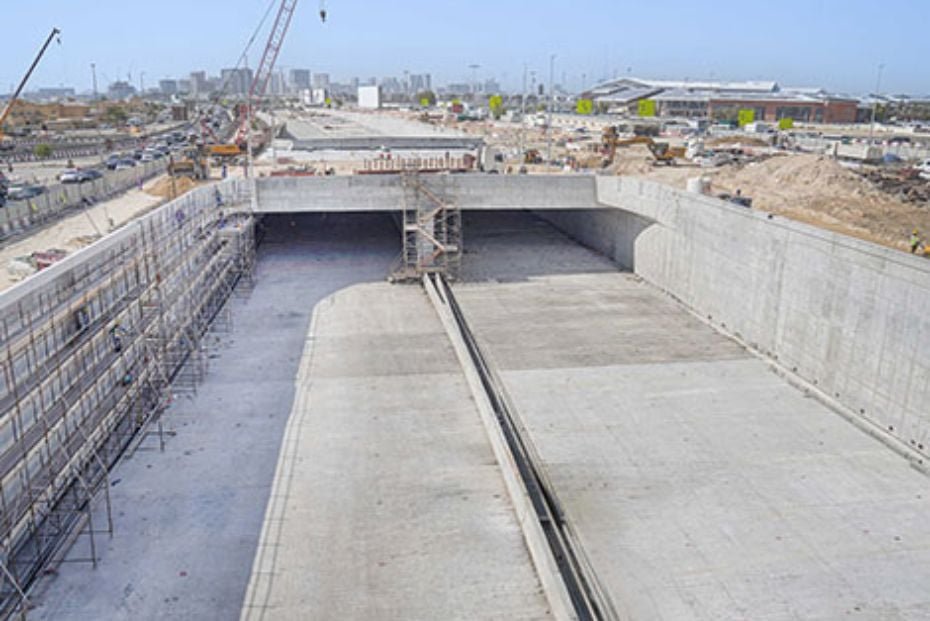
Image credit: RTA Website
Mattar Al Tayer, Director General and Chairman of the Board of Executive Directors of Dubai’s Roads and Transport Authority (RTA), has announced the completion of 70 per cent of the Umm Suqeim Street Improvement Project.
Read-Dubai traffic: How RTA aims to eliminate jams on Sheikh Zayed, Al Khail Roads
The project stretches from the intersection with Al Khail Road to the intersection with Sheikh Mohammed Bin Zayed Road. It forms part of a master development plan for the Umm Suqeim–Al Qudra corridor, which runs from Jumeirah Street to Emirates Road, spanning a total of 16kms. The corridor serves several residential and development areas with a combined population exceeding one million residents.
Al Tayer made these remarks during a site tour to inspect progress on the project, which is being implemented in line with leadership directives to enhance road infrastructure, support Dubai’s ongoing urban expansion and population growth, and ultimately improve traffic flow and mobility across the city.
During the tour, Al Tayer was briefed on completed phases of the Umm Suqeim Street Improvement Project, covering 4.6 km from Al Khail Road to Sheikh Mohammed Bin Zayed Road. Works include the development of the Umm Suqeim–Al Barsha South intersection near Kings’ School, featuring an 800-metre tunnel with four lanes in each direction along Umm Suqeim Street, and a signalised surface-level intersection.
Al Tayer added: “The Umm Suqeim–Al Qudra Corridor Improvement Project is one of RTA’s key strategic east-west traffic corridors, designed to enhance integration with the vertical north-south road network. The project complements RTA’s efforts to improve connectivity between four major arterial roads in Dubai: Sheikh Zayed Road, Al Khail Road, Sheikh Mohammed Bin Zayed Road, and Emirates Road.”
Increase in vehicle Capacity
The corridor is designed to accommodate 16,000 vehicles per hour in both directions, enhance traffic flow, and reduce travel time between Sheikh Mohammed Bin Zayed Road and Al Khail Road by 61%—from 9.7 minutes to just 3.8 minutes. It serves several major residential and development areas, including Al Barsha South 1, 2, and 3, Dubai Hills, Arjan, and Dubai Science Park.
Al Tayer was also briefed on the use of smart technologies to monitor road projects across the emirate. Drones are being deployed to capture and analyse project progress data, while artificial intelligence is used to track construction milestones and performance metrics. This integrated approach has improved operational efficiency, accelerated decision-making, and enabled real-time, high-precision data collection.
The adoption of these technologies has led to a 100% increase in field presence and a 60% reduction in time required for site surveys. Time-lapse imaging systems are also being used to continuously monitor construction activity, contributing to a 40% improvement in overall project monitoring efficiency.
Phase I of the Umm Suqeim Street Improvement Project
Phase I of the project was completed in 2013, covering the section between Sheikh Zayed Road and Al Khail Road. It included the construction of two bridges—each with three lanes in both directions—the first crossing the eastern street parallel to Al Asayel Street, and the second over the western street parallel to First Al Khail Street. It also included two signalised intersections at Umm Suqeim Street’s junctions with Al Asayel and First Al Khail Streets, along with three pedestrian bridges to ensure safe crossings between Al Quoz and Al Barsha.
In 2020, as part of the Dubai Hills Mall bridges and roads development, RTA opened a main bridge along Umm Suqeim Street at the intersection with the entrance to Dubai Hills and Al Barsha South. This 500-metre bridge features four lanes in each direction and supports a capacity of 16,000 vehicles per hour.

